Featured image at the top of this post: Gyeonggi Do Bandaji from the National Museum of Korea.
Gyeonggi Do province or Kyonggi Do, where the capital city of Seoul is located, lies in the northern western part of the peninsula. The north, south and eastern part of the province are covered by mountains.
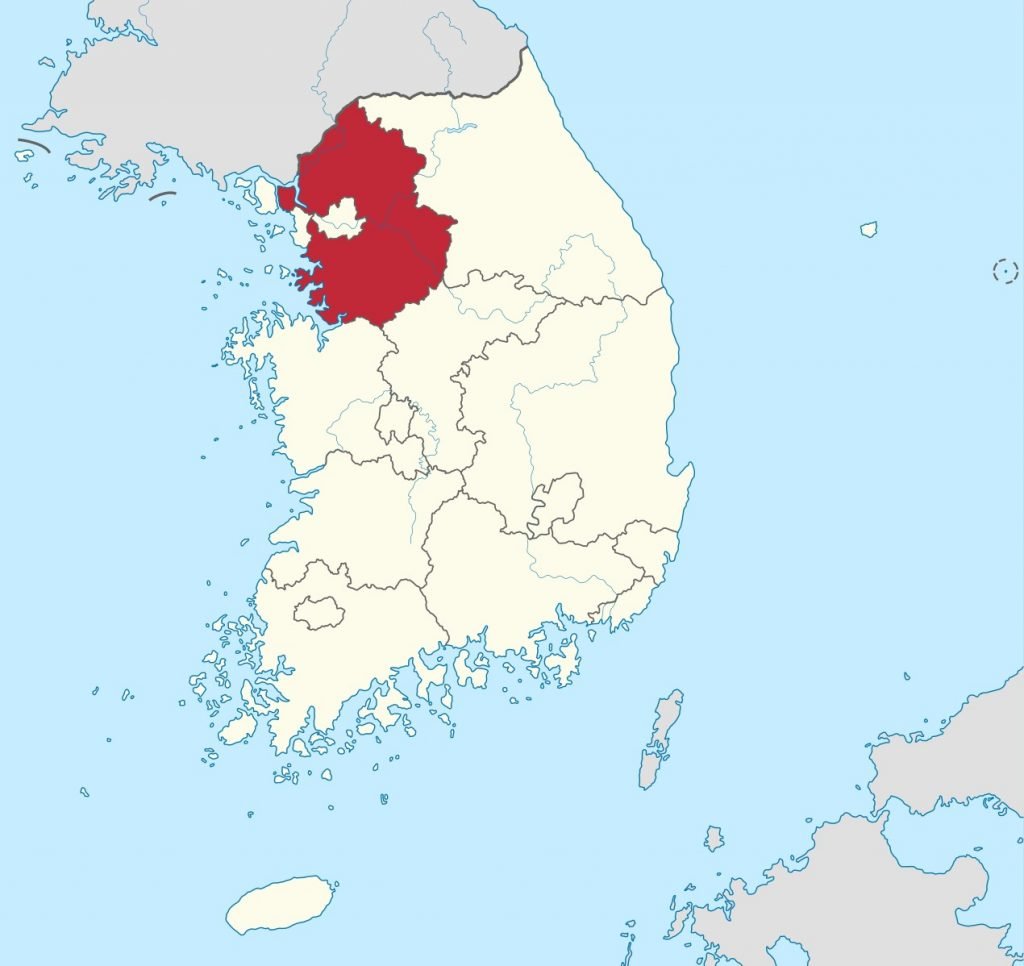
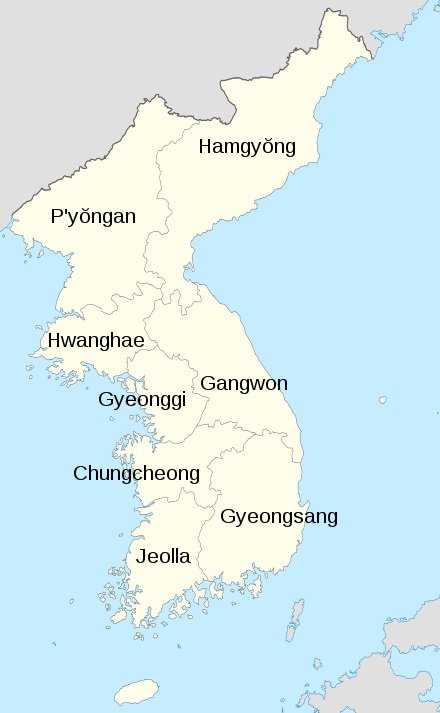
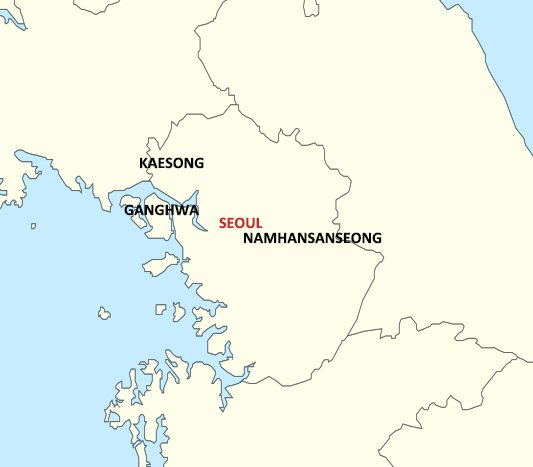

Bandaji chests, some of them belonging to wealthy families, were crafted from prized woods such as Zelkova, elm, and persimmon veneer. The average size was approximately 91cm x 70cm x 45cm.
The front opening section was wide, covering almost half of the chest in some cases.
Metal ornaments were primarily made of iron, but brass hardware, especially in yellow, could also be occasionally found, distinguishing them from Bandaji chests from other regions. The fitting designs were intricate and fine, often featuring intricate lattice cutwork. Lock plates and door fasteners were large, sometimes taking the form of swallowtails. Motifs such as swallowtails, manja (卍), bats, fish, and gourds were used for decorative purposes on various parts of the chest.

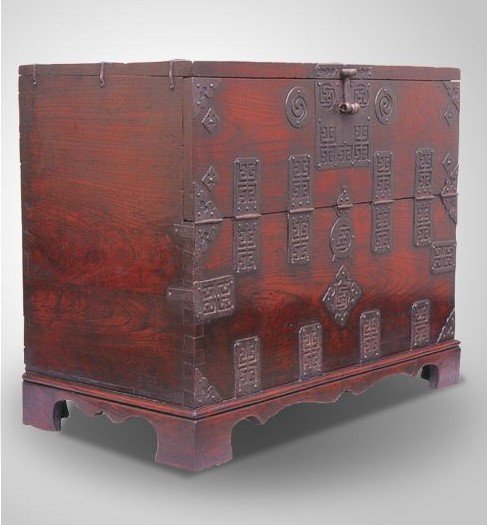

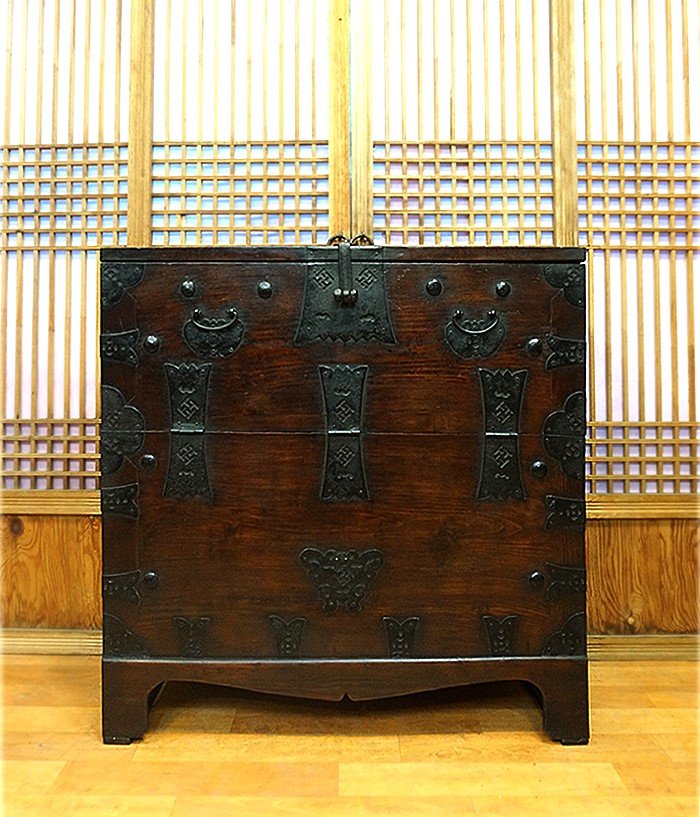
Chests of exceptional quality are rare to come by in the present day. If they remain in their original condition with minimal alterations and retain their original fittings, their prices can be quite high.
The term “Gyeonggi-do Bandaji” encompasses a range of chest types, including those from Ganghwa, Namhansanseong, Kaesong (개성), and the Gyeonggi region, which is where Seoul is situated today.
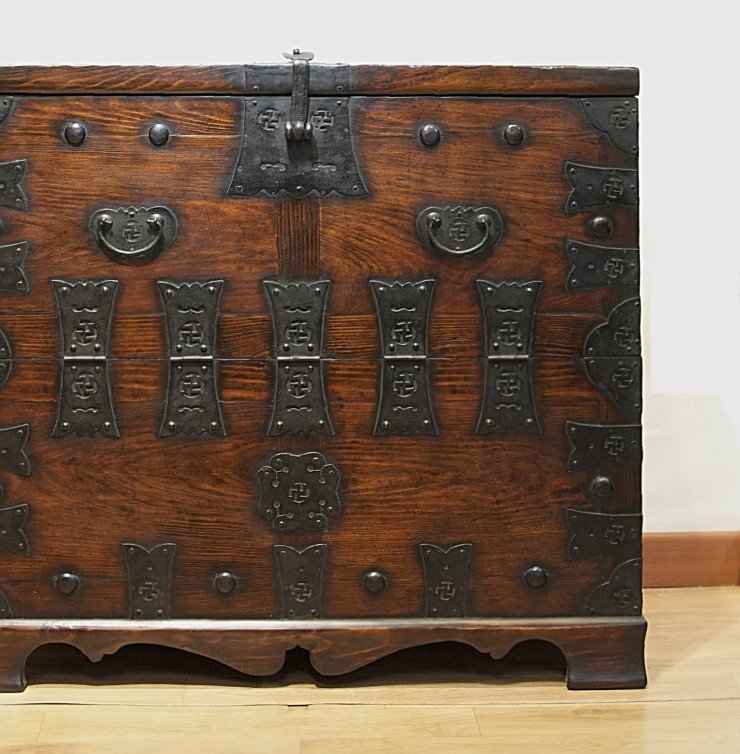
Collection: Old Story Antique Furniture, Korea.
Judging from the fittings patterns on the front and the assembly method for the front part, which consists of inserting a panel into a frame., this chest appears to be a Gyeonggi-do bandaji.

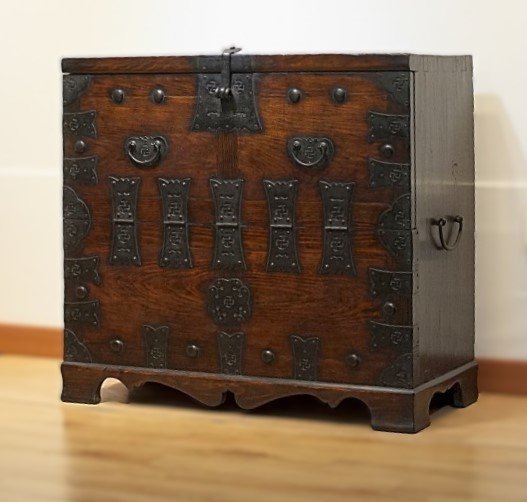
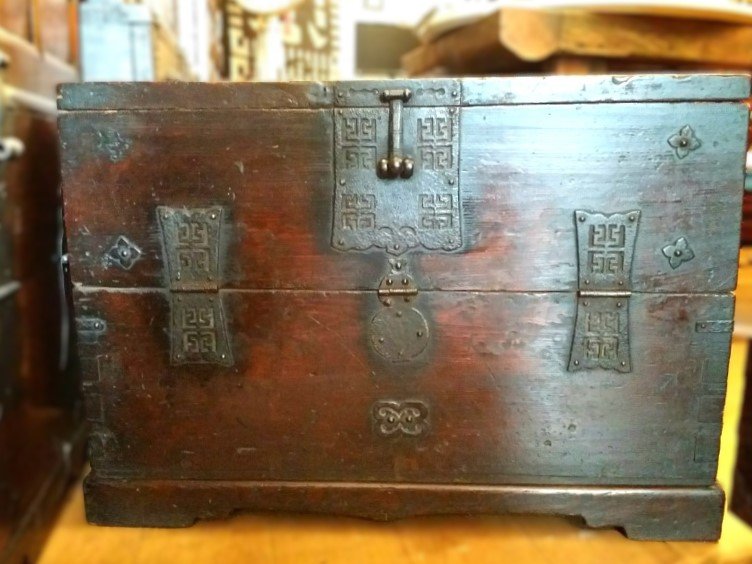
There is no comprehensive classification of regional characteristics based on metalwork design and form. In cases like this, I am cautious because there is a possibility that it may have been altered or reconstructed over time.

GYEONGGI BANDAJI
Due to the diversity of styles, it is challenging to attribute a single characteristic to Gyeonggi Bandaji. However, when looking at general features, Gyeonggi Bandaji tends to be taller and boasts larger metalwork plates compared to those from other regions.
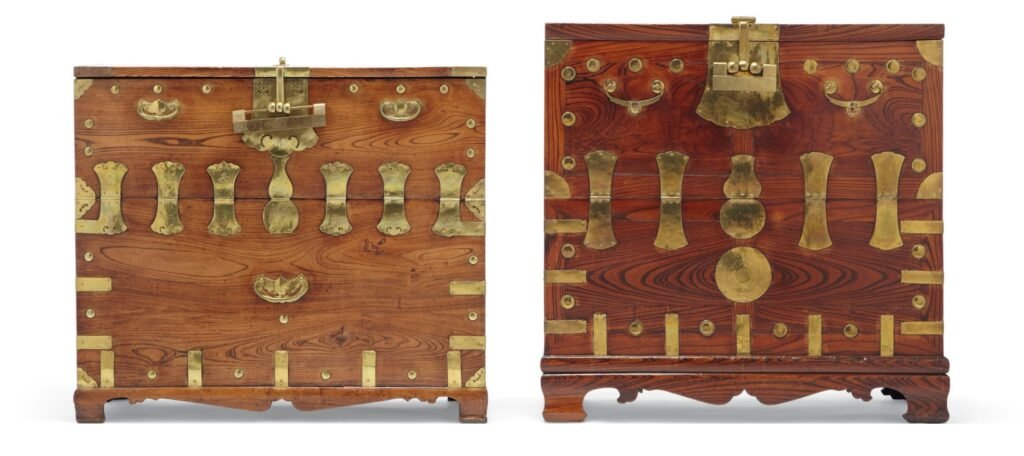
KOREA, 20TH CENTURY
Both cabinets applied with metal fittings and bracket feet
Left: 33 in. (83.8cm.) high, 38 in. (96.7cm.) wide, 17¾ in. (45cm.) deep
Right: 37¼ in. (94.5cm.) high, 37¼ in. (94.6cm.) wide, 18½ in. (47cm.) deep.
THE FLORENCE AND HERBERT IRVING COLLECTION. Christie’s. Live Auction. Lacquer, jade and bronze. March 21, 2019.
The primary material used for brass hinges is in the shape of a gourd, and the fittings often feature prominent animal and plant patterns, making them distinctive features.
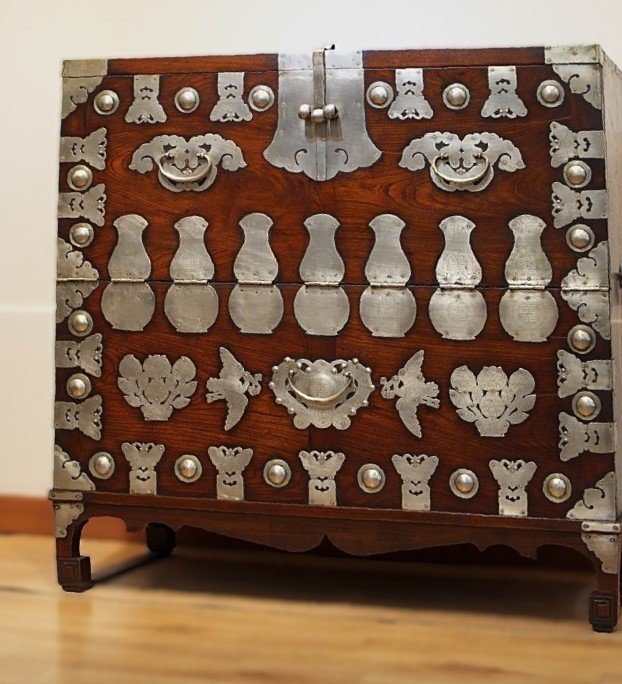
Collection: Old Story Antique Furniture, Korea.
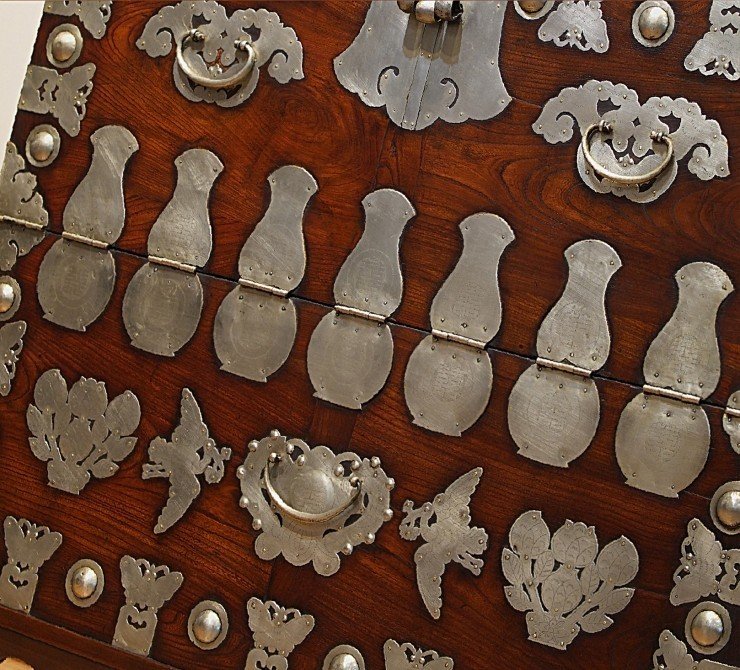
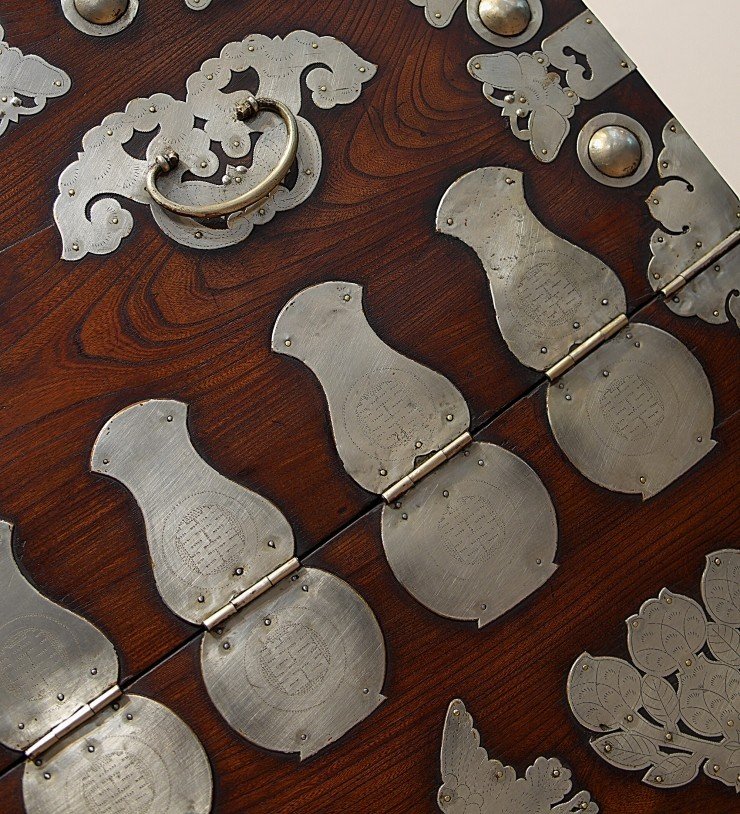

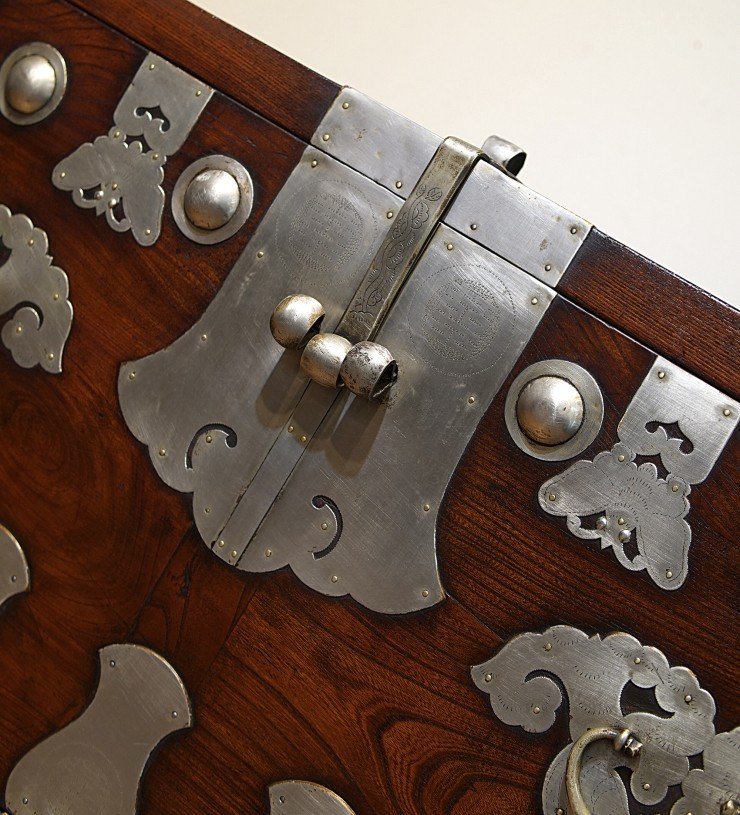


Collection: National Folk Museum of Korea.

H. 53,5cm, W. 91cm, D. 44cm.
Collection of the National Folk Museum of Korea.
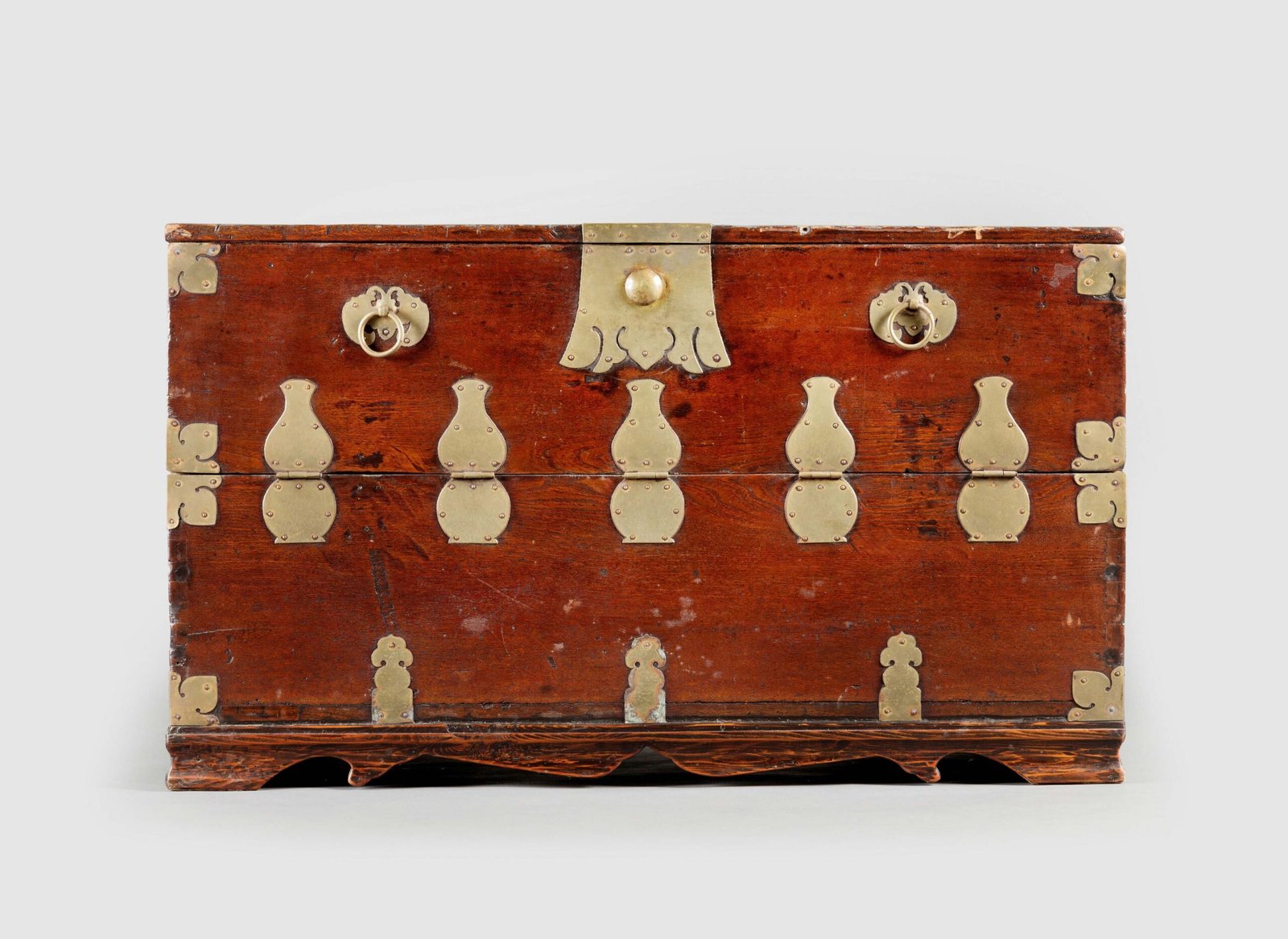
Collection: National Folk Museum of Korea.
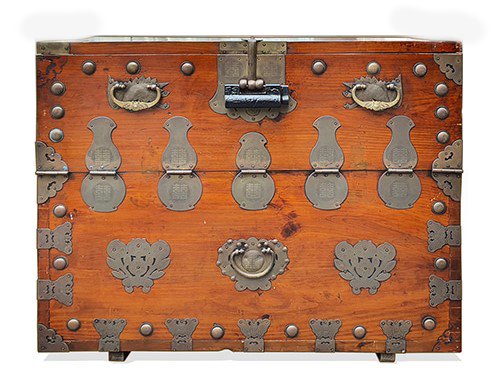
H. 83cm, W. 109cm, D. 51cm.
As a majority of the royal family and palaces of the Joseon Dynasty were situated in Gyeonggi-do, the Bandaji used in this province is predominantly associated with nobility and wealthy families.
In this province, the center of power and home to the nobility, the bandaji could be larger and more complex in shape, combining drawers with the front panel. As shown in the photos hereunder, within the chest, a row of drawers with circular handles is typically incorporated beneath the top panel.
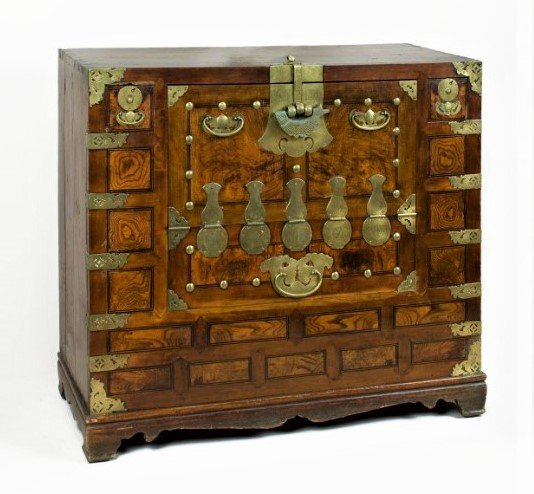
zelkova and ash woods with brass fittings. 19th century.
H. 86cm, W. 95,5cm, D. 43,2cm.
Collection Denver Art Museum, USA.
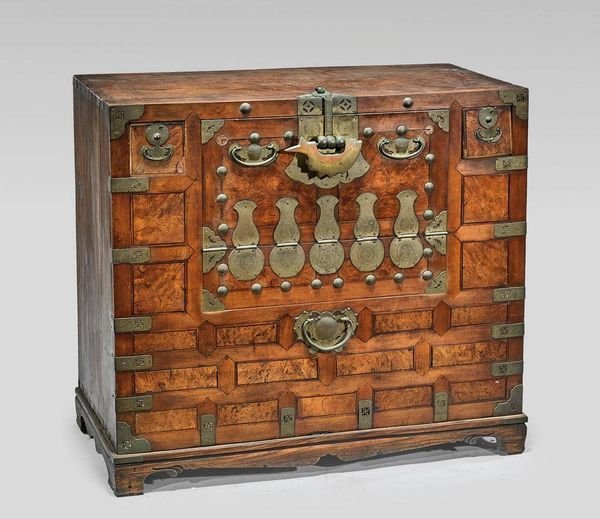
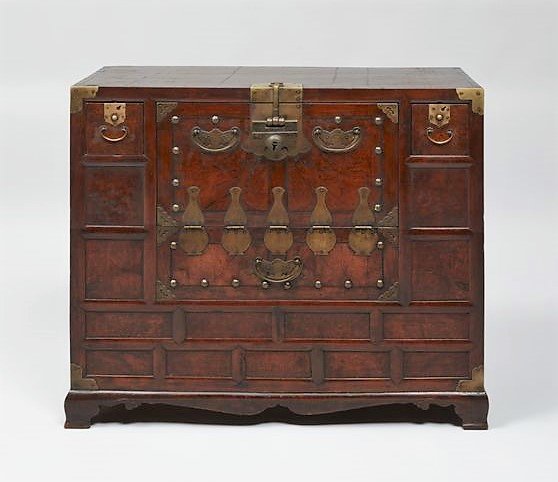
METALWORK DESIGN


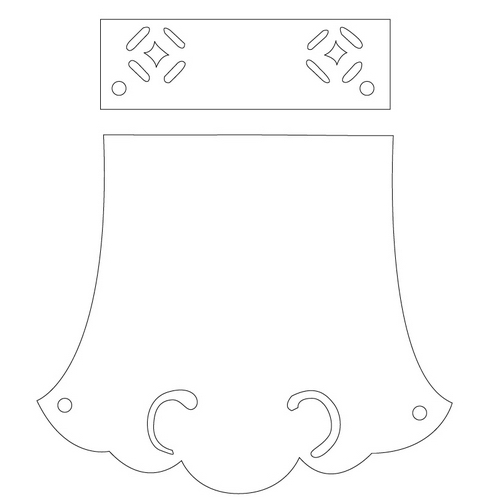


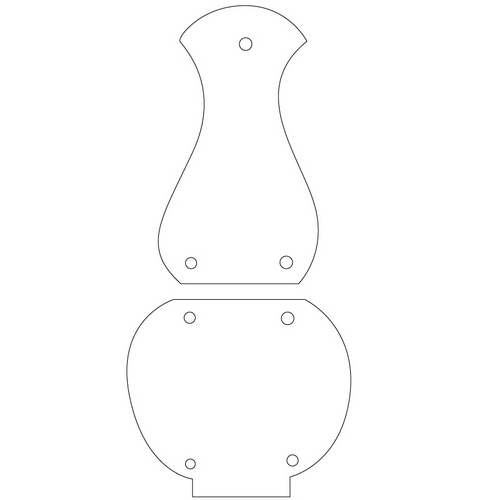



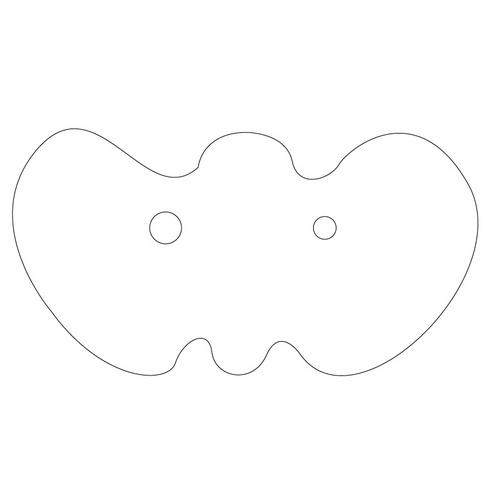



Yellow brass fittings with typical design ( chest dimension & elaborate stand) and metalwork patterns from Gyeonggi Do province.
Three large front fittings are engraved with lotus motifs, bat-shaped handles plates, and ornamental rosettes on the top part of the chest. Late 19th century.
H. 61,6cm, W. 86cm, D. 42,5cm.

Linden wood, white brass fittings.
Collection of the
“MIRIBEOL” Folk Museum in Gyeongsang Do province.

Collection of the Jeju Craft Museum, Korea.
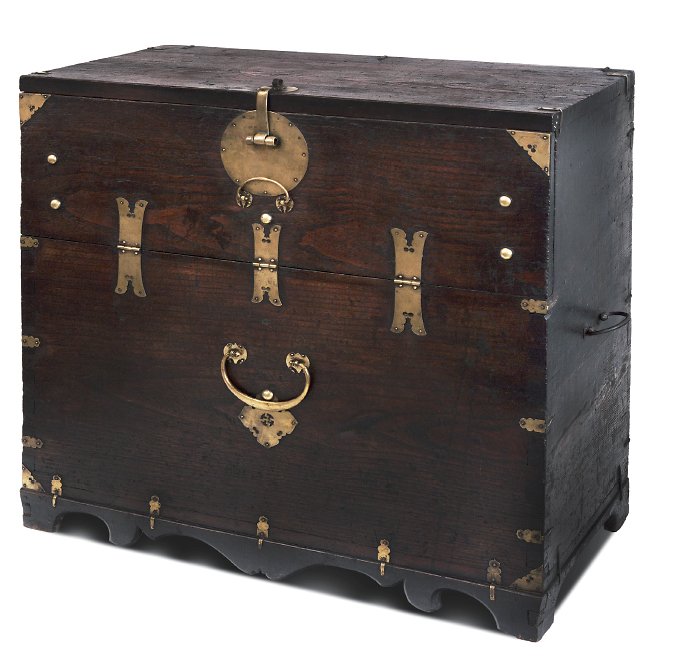
H. 85cm, W. 82cm, D. 43cm.
Collection of the Ganghwa History Museum, Korea.

GANGHWA BANDAJI – 강화도
A special mention must be made regarding Bandajis from the Ganghwa area, known as 강화도 in Korean. These are considered the most esteemed among all Bandajis, renowned for their delicate and meticulous craftsmanship. They were primarily produced for the royal courts of the Joseon Dynasty. Cast iron and brass are the primary materials for decoration, often featuring engravings of 亞 and 卍 on the metalwork. Additionally, a single calabash-shaped hinge in the center is a common characteristic.
Today, these chests from the island located to the west of the province are regarded as masterpieces. They were crafted from beautifully grained, thick wood such as zelkova.

These Bandajis were taller in comparison to their width when compared to other chests. The iron fittings were highly elaborate, often covering a significant portion of the front. The metalwork pieces of exceptional quality were typically thick and engraved with various motifs such as the swastika and the Taeguk.
A gourd-shaped pattern was commonly placed in the center, alongside the swallowtail fittings. Consequently, a single chest could have up to five of these fittings securing the front door. The top lock plate exclusively covered the front part of the chest and did not extend to the top, allowing for better utilization of the chest’s upper surface.



Ganghwa Bandaji. Pine wood, H. 59cm, W. 74cm, D. 42cm. Late Joseon Dynasty.
This type of chest was rarely made in small size and was used to store clothes, books, scrolls, etc.
Very intricate iron metalwork.
Inside the Bandaji, three drawers with circular handles were included to maximize the use of the interior space.
There is a story that tells of excellent craftsmen and blacksmiths, who migrated from Ganghwa-do, which became the capital during the Mongol uprising, continuing to produce these chests into the Joseon Dynasty. Consequently, Bandajis with thick and exquisite iron metalwork were a hallmark of the Ganghwa-do area, where prized zelkova trees were also readily available.


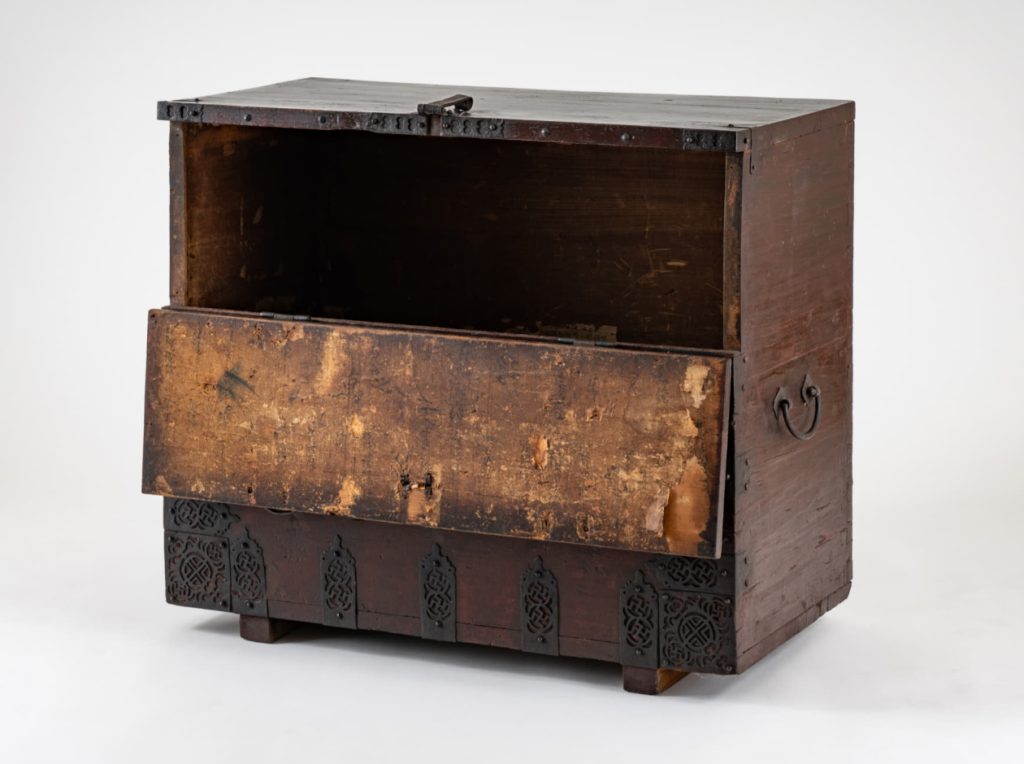




H. 77cm, W. 89cm, D. 43cm.
Private collection.

Presented at an auction in Seoul Korea.

Early 20th century.
Collection of the National Folk Museum of Korea.

Collection of the National Museum of Korea.
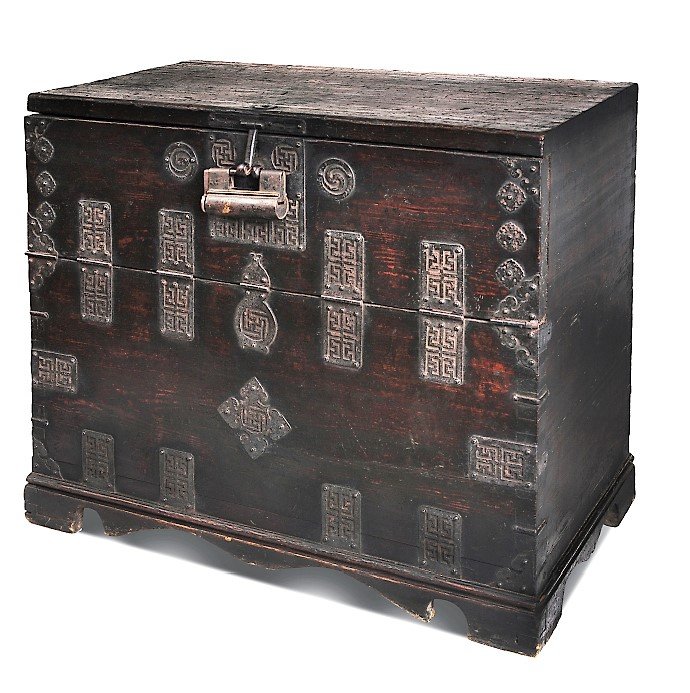
H. 84cm, W. 77cm, D. 49,5cm.
Collection of the Ganghwa History Museum, Korea.

H. 94,6cm, W. 80,4cm, D. 52,6cm.
Collection of the Ganghwa History Museum, Korea.

H. 79,5cm, W. 96cm, D. 51cm.
Collection of the Horim Museum, Korea.
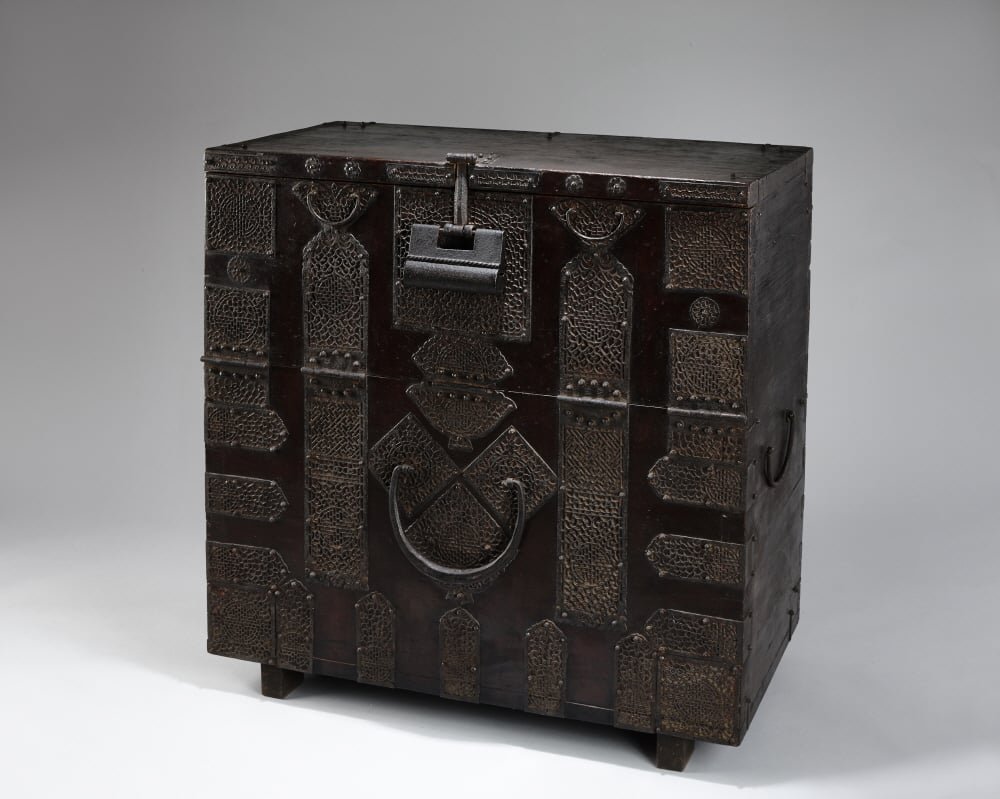
H. 99cm, W. 97,8cm, D. 48,5cm.
Collection of the Horim Museum, Seoul, Korea.
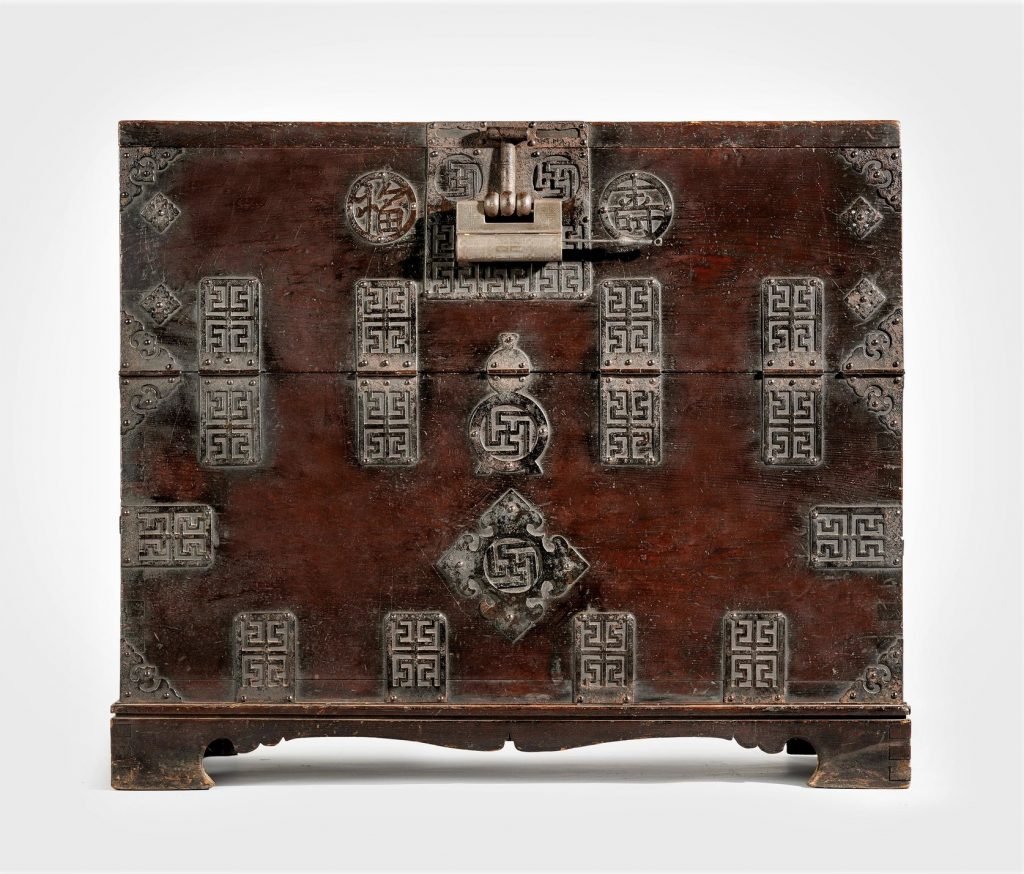

H. 72cm, W. 86cm, D. 44cm. Private Collection.

Zelkova wood, cast iron fittings, oil finish.
H. 59cm, W. 74cm, D. 42cm.
Late Joseon Dynasty, 19th century.
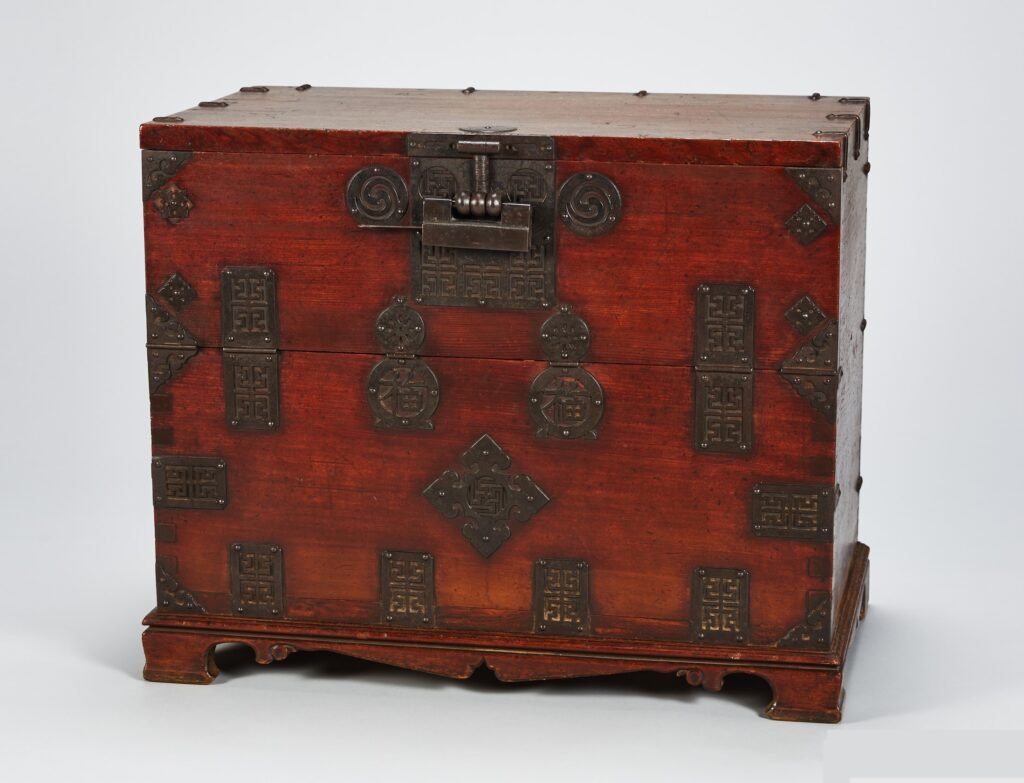
H. 59,5cm, W. 71,3cm, D. 40,5cm.
Late Joseon Dynasty, 19th century. Collection: National Museum of Korea.
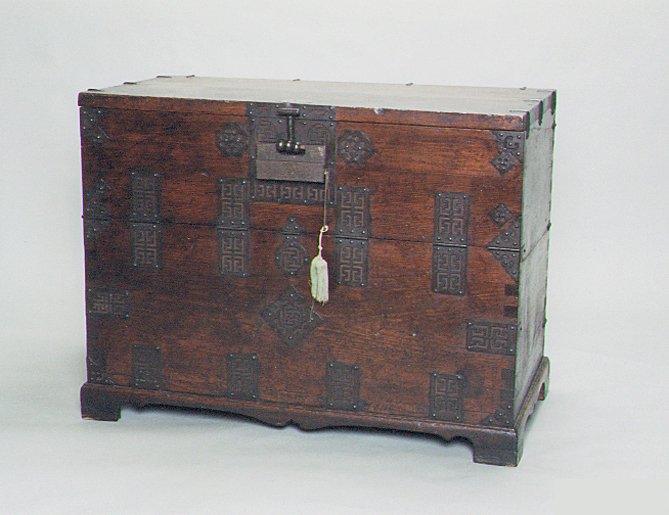
H. 75,5cm, W. 101,5cm, D. 53,3cm.
Late Joseon Dynasty, 19th century. Collection: National Museum of Korea.
NAMHANSANSEONG BANDAJI.
The most distinctive feature of Namhansanseong Bandaji is the presence of bat decorative patterns on most of them, specifically on the front opening door handle plates. Additionally, the front metalwork forms a fan shape. The height of the door and the front board is proportionate (50%), and in some cases, the doors are even larger than the bottom panel, which is a unique characteristic of Bandaji and not found in any other styles.
These chests have an overall tall height and a narrow width. Another prominent feature is the unusually large hinges connecting the door panel and the front panel, which resemble horseshoes, hence earning the nickname “horseshoe” hinges.
All of these distinctive features set Namhansanseong Bandaji apart and make it easily distinguishable from other chest models.
Some rare variations have two levels: a row of small drawers at the top, a row with two doors, and a bottom Bandaji-type opening at the base.
For the metalwork, iron and yellow brass were used, while the pieces are made from beautifully grained zelkova wood, adding to their uniqueness.

Elm wood, iron fittings.
Namhansanseong area. Gyeonggi Do province.
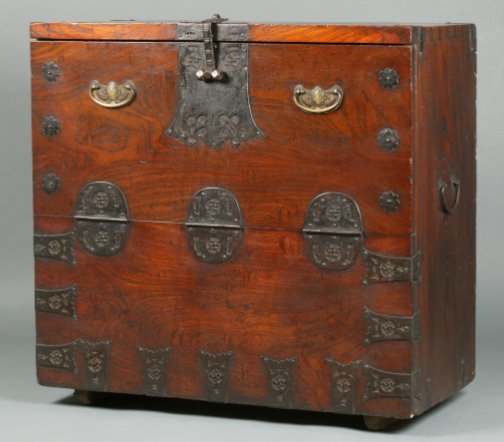
Zelkova wood, yellow brass and iron fittings with engraved motifs. Namhansanseong area, Gyeonggi Do province.
Collection the national Museum of Korea, Seoul.
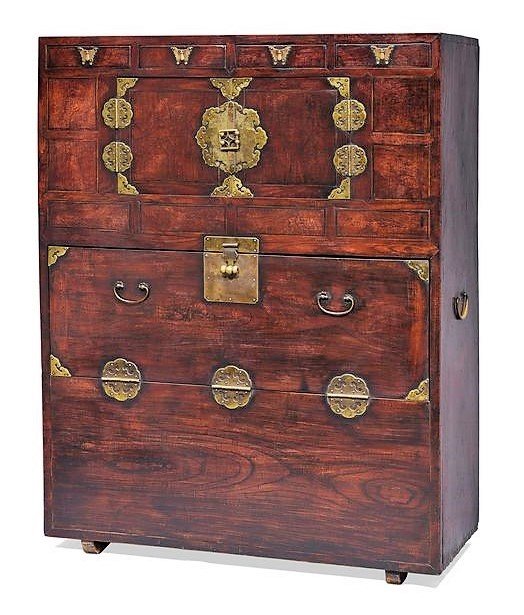
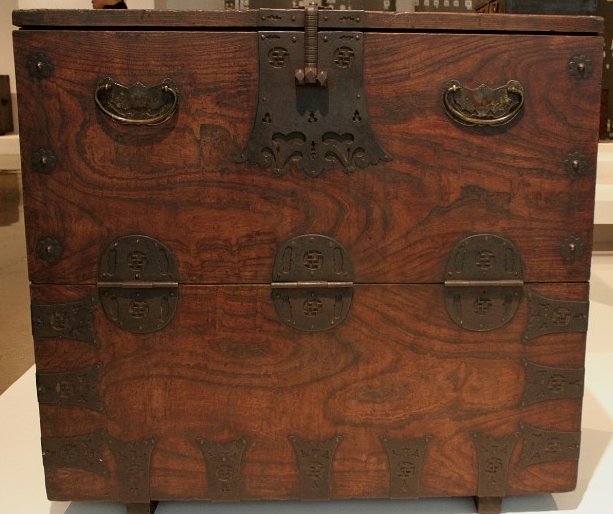
Zelkova wood, iron fittings.
Namhansanseong area. Gyeonggi Do province.

Red pine wood, iron fittings.
Namhansanseong area. Gyeonggi Do province.
H. 79cm, W. 95cm, D. 45cm.

Photo credit: Tanaka Juuyoh.
Shoji Hamada Memorial Mashiko Sankokan Museum, Mashiko-machi, Haga-gun county, Tochigi-ken Prefecture, Japan.

Collection: Old Story Antique Furniture, Korea.
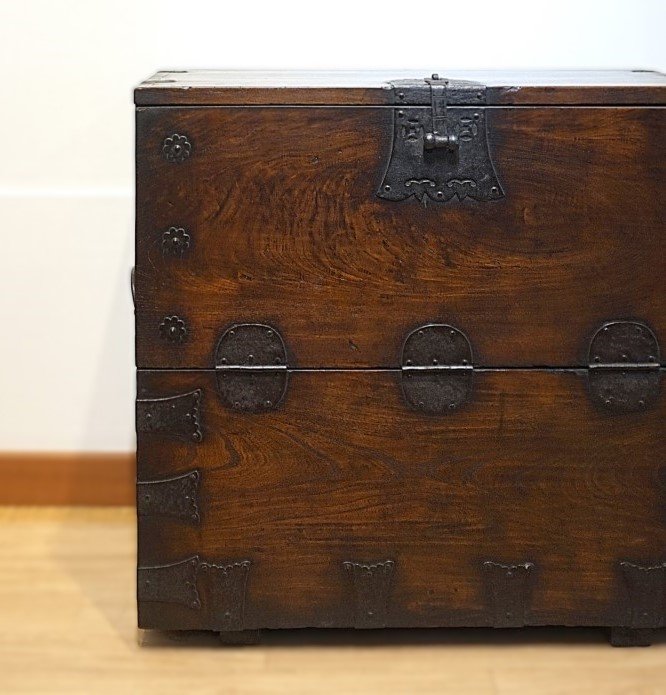

The circular cast iron opening panel fittings is a unique feature on Bandajis from Namhansanseong area.
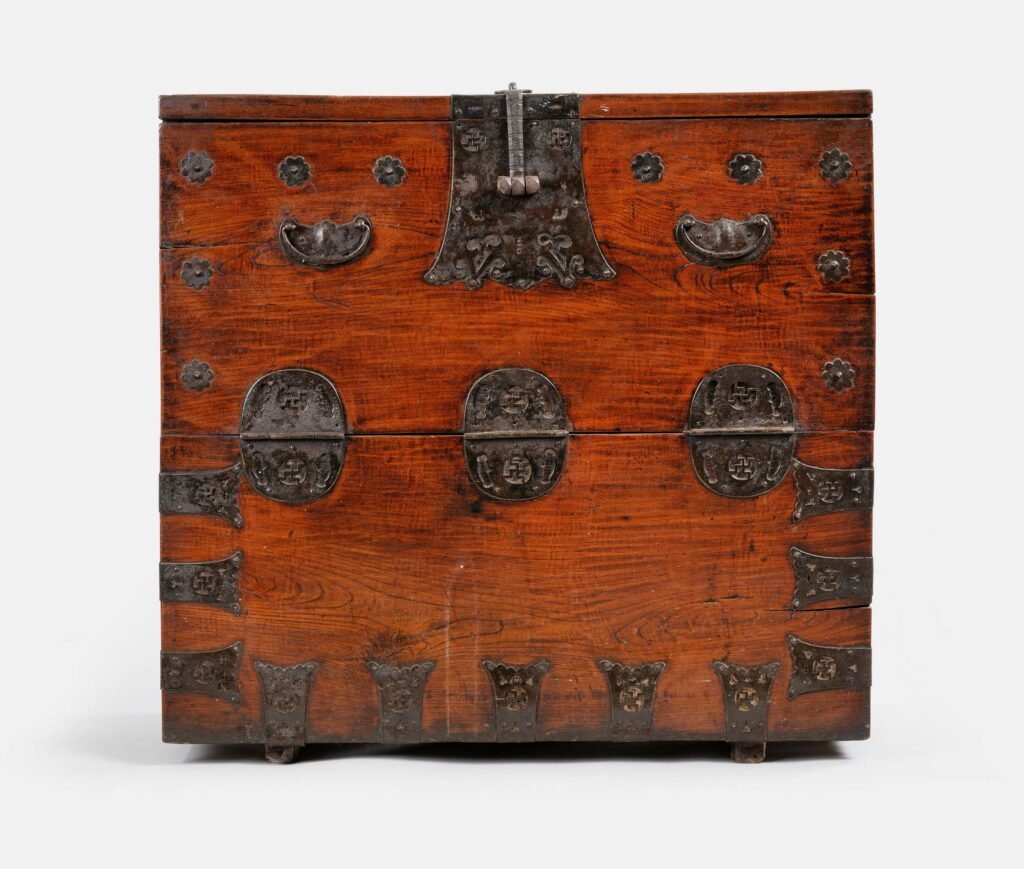
Namhansanseong area. Gyeonggi Do province.
H. 83cm, W. 87,4cm, D. 40cm.
Collection: National Folk Museum, Seoul.
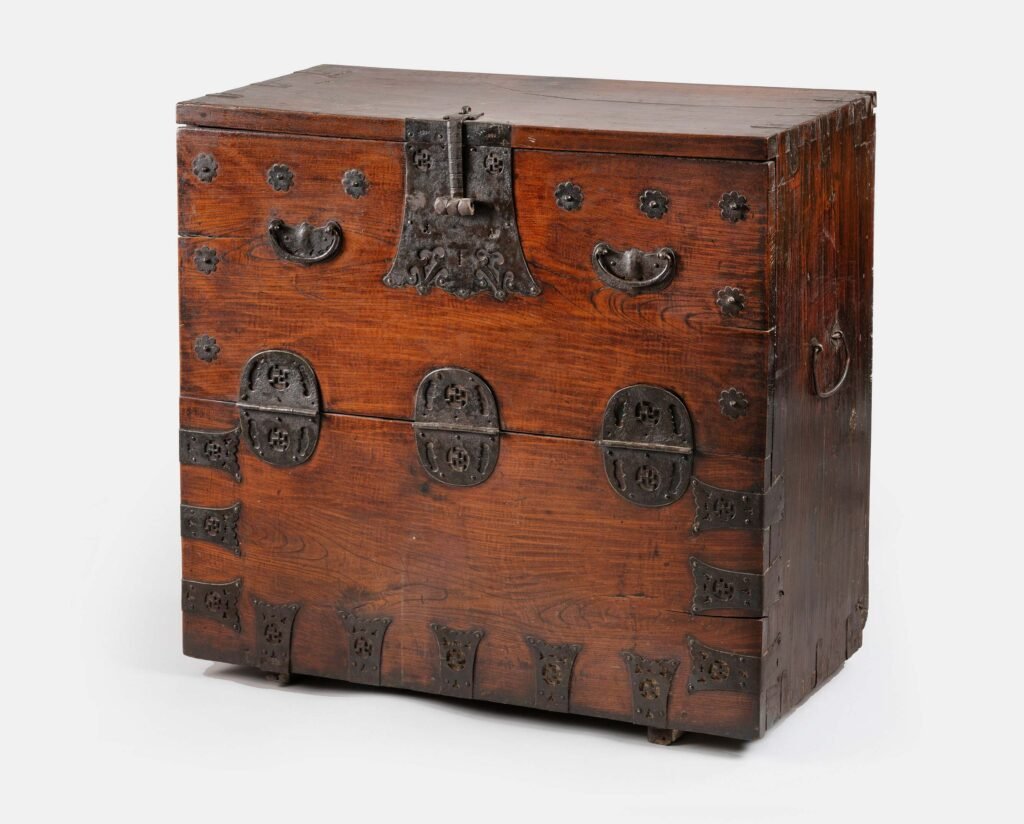
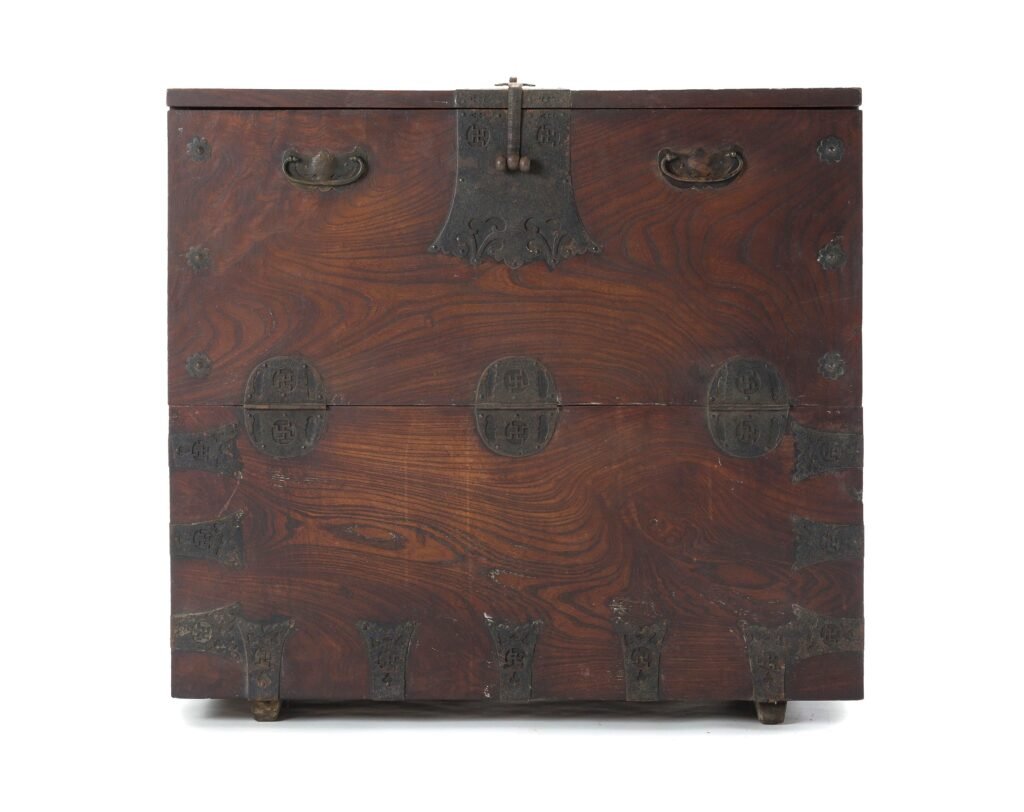
Namhansanseong area. Gyeonggi Do province.
H. 84cm, W. 91,7cm, D. 43,3cm.
Collection: National Folk Museum, Seoul.

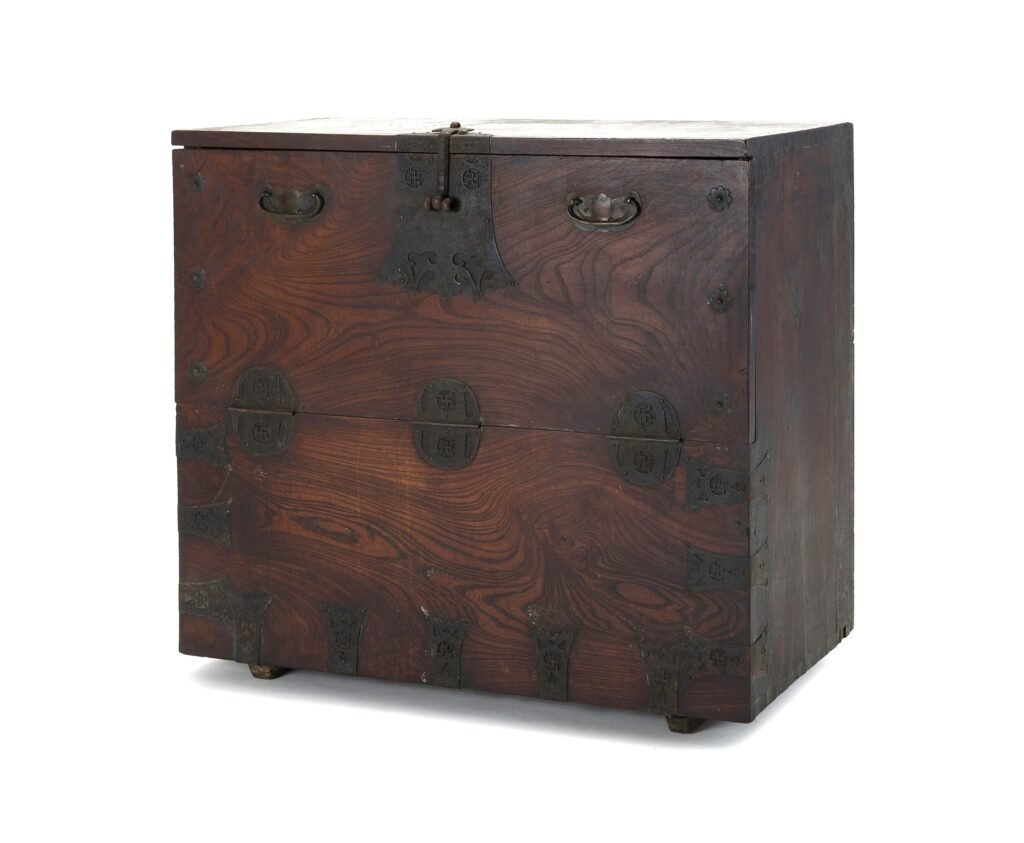
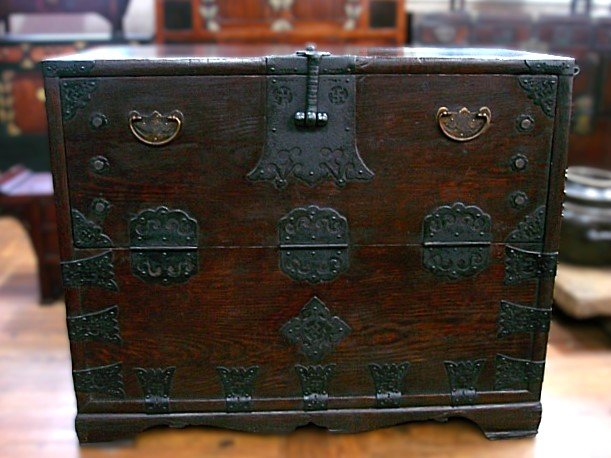
Namhansanseong area. Gyeonggi Do province.
H. 79cm, W. 95cm, D. 45cm. Private collection.
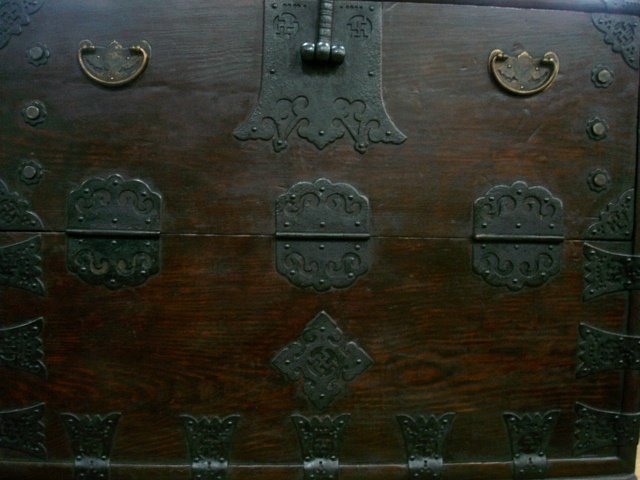
KAESONG BANDAJI.
During the Joseon dynasty, Kaesong was situated in the northern part of Gyeonggi province.
The primary distinctive features of Bandaji from this region include the extensive use of fine yellow brass for the metalwork. Metalwork occupies a significant portion of the chest’s front surface. Decorative patterns include double cabbage fittings and handle plates, large butterfly plates, gourds, and crucian carp motifs.

Low bandaji, elm wood, yellow brass fittings.
Kaesong style.
Early 20th century. Collection: “ANTIKASIA”.

Large bandaji or blanket chest.
Elm wood, yellow brass fittings.
Kaesong style. Early 20th century. Collection: “ANTIKASIA”.
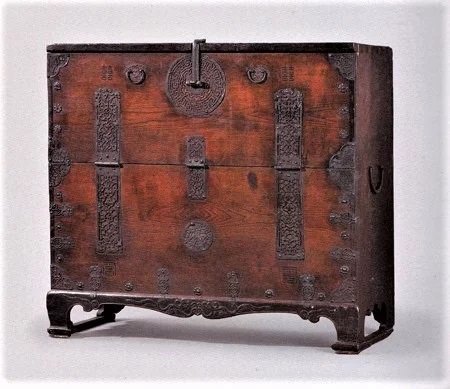
Red pine wood. Fine iron metalwork and elaborate legs with some carvings.



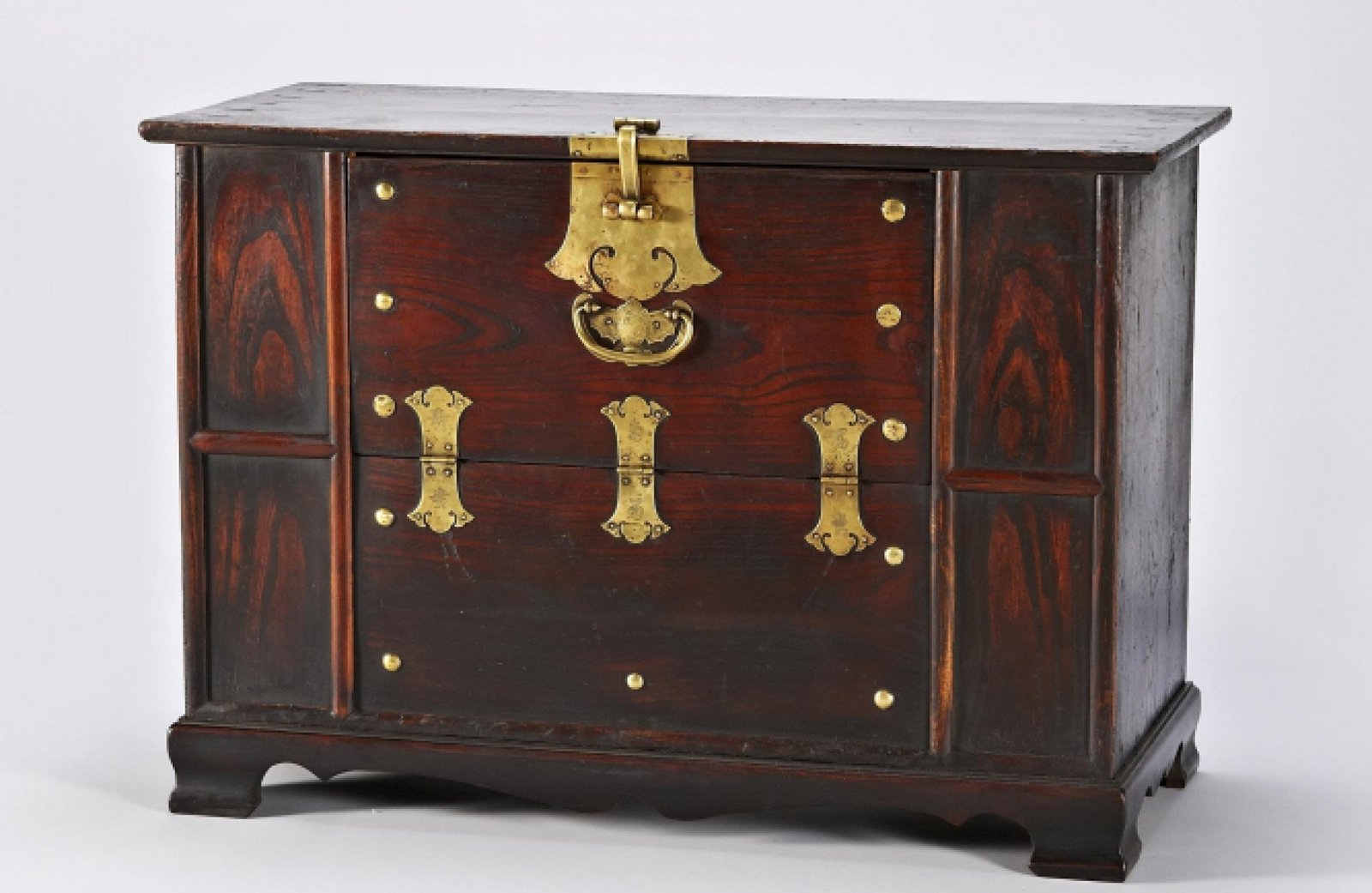
Hallo
Diese Seite ist der Hit !
Ich bin maßlos begeistert. Herzlichen Dank für diese phantastisch aufklärende Seite. Endlich kann ich meine gesammelten koreanischen Möbel versuchen einzuordnen. Und ich erkenne jetzt viel mehr wieder. Was für eine Freude!
Bei 120 Möbelstücken habe ich viel zu entdecken. Darf ich dir auch mal Fotos senden, wenn ich nicht weiter weiß ?
Liebe Grüße aus dem Süden von Hamburg
Detlef
Dear Detlef, Thank you for your comment, and glad you like our blog. If you have any questions, do not hesitate to contact me. You can also join our community in our Facebook group https://www.facebook.com/groups/koreanantiquefurniture. Best regards Yves.
Lieber Detlef, vielen Dank für deinen Kommentar und schön, dass dir unser Blog gefällt. Wenn Sie Fragen haben, zögern Sie nicht, mich zu kontaktieren. Du kannst auch unserer Gemeinschaft in unserer Facebook-Gruppe https://www.facebook.com/groups/koreanantiquefurniture beitreten. Mit freundlichen Grüßen Yves.
[…] LINK: GYEONGGI DO BANDAJI – 경기도 반닫이 […]